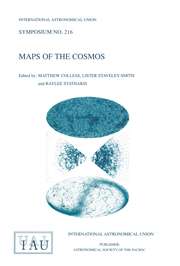Article contents
The Problem of X Persei
Published online by Cambridge University Press: 14 August 2015
Extract
X Per is a variable emission line star which shows among other peculiarities a weak X-ray emission (4U 0352+30) and a strongly variable IR excess (Ferrari-Toniolo et al. 1978, Viotti et al. 1980). In the past decade the star has undergone three phases of enhanched “activity” (1972–73, 1978 and 1980) characterized by brighter visual luminosity, excess in the Balmer continuum and in the IR, stronger X-ray emission, with intermediate periods of minimum activity (1974–77, 1979) when the optical-infrared energy distribution was closer to that of a normally reddened early type star (figure 2). But during most of its history the energy distribution largely deviated from that of a non-emission line early type star, and the first problem is to determine the interstellar extinction, disregarding any “local” effect. The strength of the 2200 A band in the UV spectrum of X Per is consistent with E(B-V)=0.35, a value close to the extinction towards other Per II stars:  Per (0.34), o Per (0.31),
Per (0.34), o Per (0.31),  Per (0.32, Viotti & Lamers 1975). The i.s. Ly∝ line observed in the high resolution IUE spectrum of X Per obtained on 1979, December 23, has a FWHM of 11.0 A corresponding to N(HI)=4.9 1020 cm−2. The Copernicus observation of H2 lines (of not good quality) gives N(H2)≅1.1 1021 (Mason et al. 1976). A much lower value of 3–5 1020was derived by Snow (1976, 1977) for o and
Per (0.32, Viotti & Lamers 1975). The i.s. Ly∝ line observed in the high resolution IUE spectrum of X Per obtained on 1979, December 23, has a FWHM of 11.0 A corresponding to N(HI)=4.9 1020 cm−2. The Copernicus observation of H2 lines (of not good quality) gives N(H2)≅1.1 1021 (Mason et al. 1976). A much lower value of 3–5 1020was derived by Snow (1976, 1977) for o and  Per. Taking for X Per N(H2)≅5 1020we have N(H total)≅1.5 1021, yielding to N(H)/E(B-V)=4.3 1021 cm−2/mag in agreement with Bohlin law (1975).
Per. Taking for X Per N(H2)≅5 1020we have N(H total)≅1.5 1021, yielding to N(H)/E(B-V)=4.3 1021 cm−2/mag in agreement with Bohlin law (1975).
Information
- Type
- VII. UV Observations and Mass Loss
- Information
- Copyright
- Copyright © Reidel 1982
References
- 1
- Cited by

